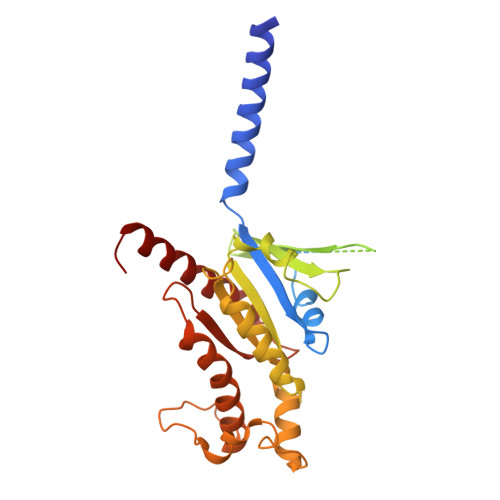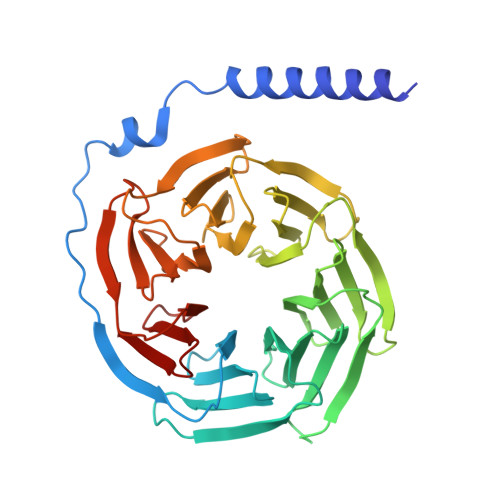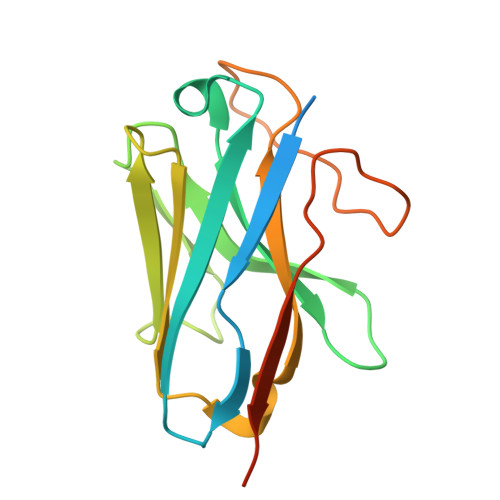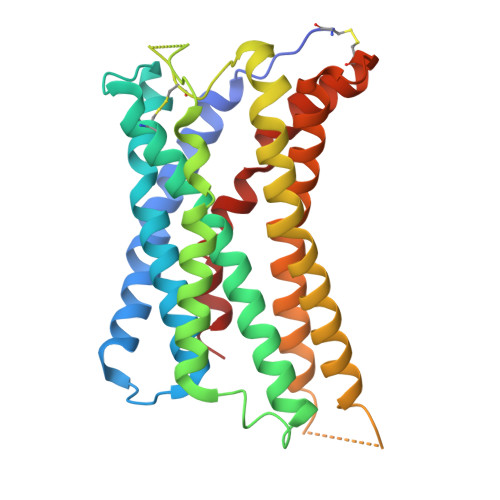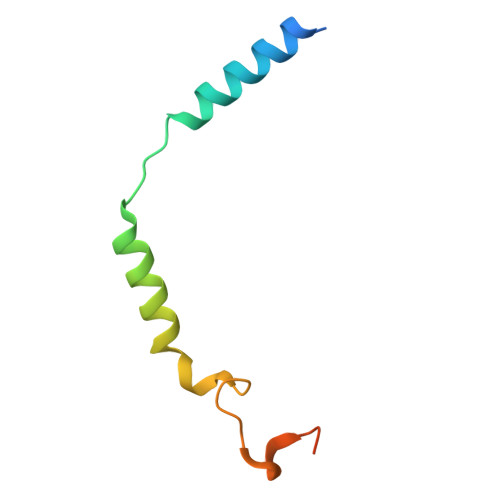Molecular mechanism of ligand recognition and activation of lysophosphatidic acid receptor LPAR6.
Duan, Y., Xu, Z., Hao, B., Zhang, A., Guo, C., He, Y.(2025) Proc Natl Acad Sci U S A 122: e2415426122-e2415426122
- PubMed: 39847322
- DOI: https://doi.org/10.1073/pnas.2415426122
- Primary Citation of Related Structures:
9ITB, 9ITE - PubMed Abstract:
Lysophosphatidic acid (LPA) exerts its physiological roles through the endothelialdifferentiation gene (EDG) family LPA receptors (LPAR1-3) or the non-EDG family LPA receptors (LPAR4-6). LPAR6 plays crucial roles in hair loss and cancer progression, yet its structural information is very limited. Here, we report the cryoelectron microscopy structure of LPA-bound human LPAR6 in complex with a mini G 13 or G q protein. These structures reveal a distinct ligand binding and recognition mode that differs significantly from that of LPAR1. Specifically, LPA uses its charged head to form an extensive polar interaction network with key polar residues on the extracellular side of transmembrane helix 5-6 and the extracellular loop 2. Structural comparisons and homology analysis suggest that the EDG and non-EDG families use two distinct modes for LPA binding. The structural observations are validated through functional mutagenesis studies. We further uncover the mechanisms of LPAR6 activation and principles of G-protein coupling. The structural information revealed by our study lays the groundwork for understanding LPAR6 signaling and provides a rational basis for designing compounds targeting LPAR6.
- Faculty of Life Sciences and Medicine, Harbin Institute of Technology Center for Life Sciences, School of Life Science and Technology, Harbin Institute of Technology, Harbin 150001, China.
Organizational Affiliation:








